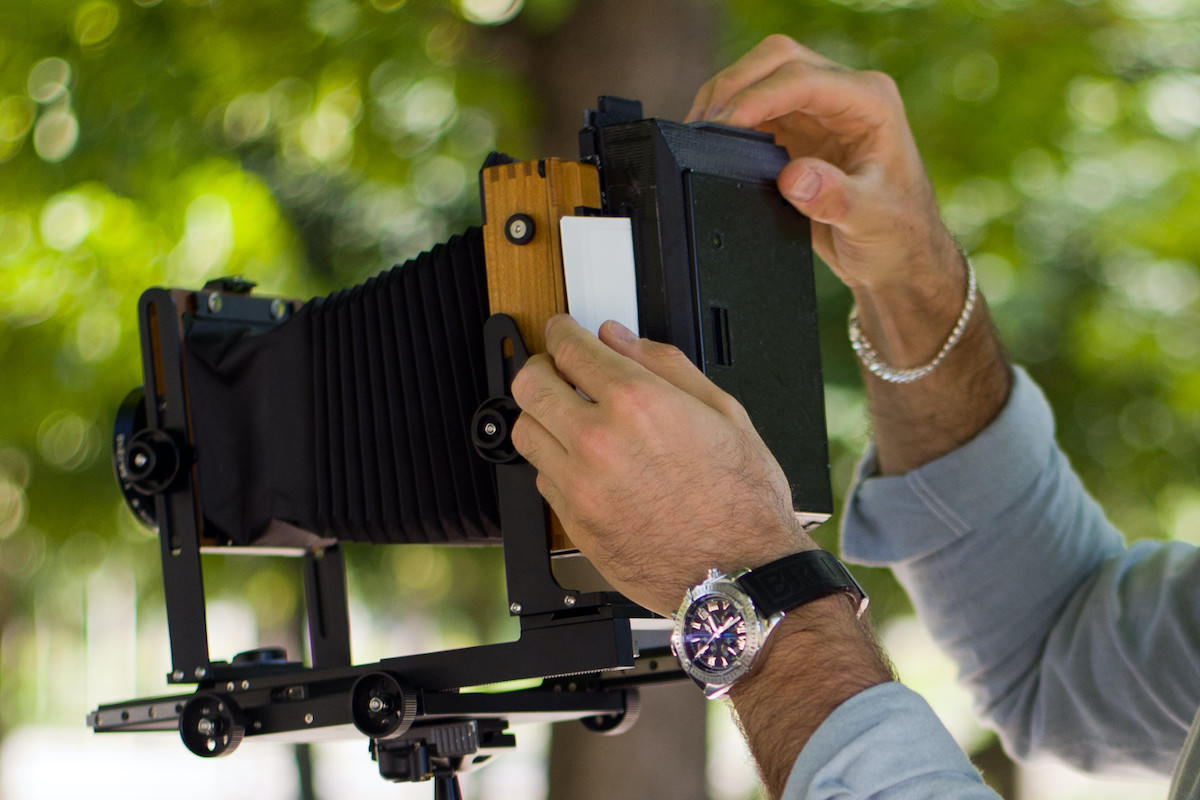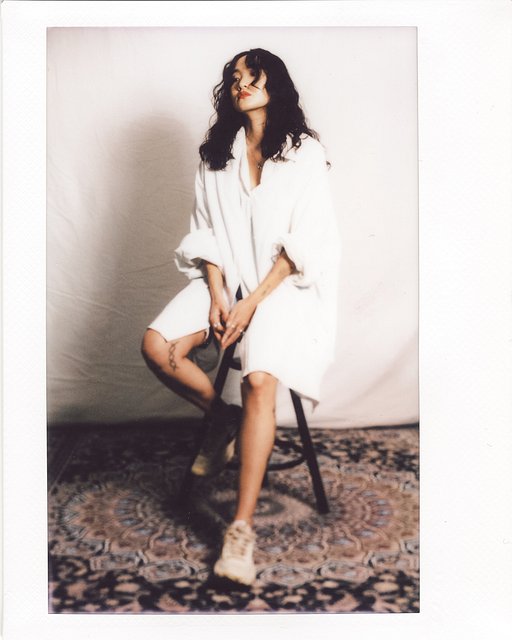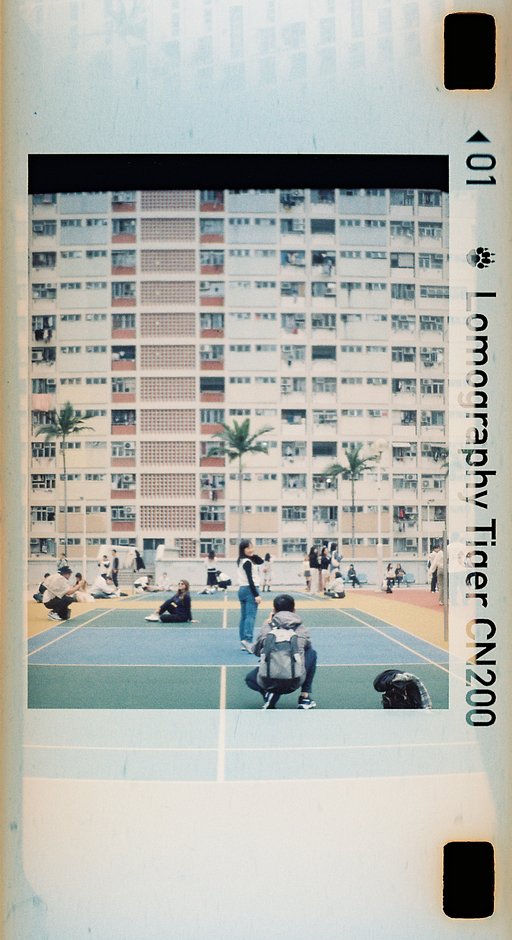Love for Large Format: Intrepid Camera Co. Tries Out the New LomoGraflok Instant Back
19 Share TweetSharing the passion for all things creative photography has always been at the center of Lomography's ideals when it comes to designing and producing photo equipment. That is why we do our best to come up with new and exciting ways to give you more creative options across different photographic formats. Coming hot off the release of our new LomoGraflok 4x5 Instant Back for large format cameras, we got to talk to Maxim Grew, the founder of Intrepid Camera Company to pick his brains about it and to see how you can use it on your own creative adventures in the world of large format photography.
The Intrepid Camera Company is a passionate group of people who introduced large format photography to a whole new generation of photographers by making it easily accessible to all, and not to mention, making it super fun for everyone. That is why we thought they were the perfect candidate to try out the Graflok Instant Back. A match made in large-format heaven.
Could you introduce yourself?
So, the Intrepid Camera project started six years ago now. It was just me in a garage, and the idea was to make large format photography much more affordable and much less intimidating. Originally, the idea was to design and produce an open-source camera that anyone could download the parts to 3D print and make themselves. As I moved on with the project, it proved to be a lot more popular than expected and I realized that being able to manufacture the camera ourselves and sell it to people was a much better route to go down.
So we started that in the first year, and since then we’ve grown the range. So we’ve got the 4×5 camera, which is the smallest large format, and then a 5×7 and 8×10. We’ve done several Kickstarter campaigns to raise money, and now we’ve got thousands of users all over the world shooting large format when they might as well not have because of intimidation around price or lack of information.
We love how your company made large-format photography more accessible to photographers who are not familiar or had little experience with the format. Could you tell us a little bit about how the Intrepid Camera project started?
Sure, so it started as a University project looking into why interest in large format photography was dwindling whereas a lot of other analogue photography mediums were picking up. So I started looking into that, and specifically the sustainability of it as a photography format. And one of the big problems I found was that most of the cameras were made by people sort of as a “one-offs” or quite intense carpentry projects. So you’ll have someone with a very traditional carpentry skill set making cameras, who will make maybe a few a year. And these people making cameras were getting older and the knowledge was not really being passed down.
So we started looking into how we could completely change the manufacturing method of large format, modernize it, and also make it more affordable so that more people could get into it. So that was the starting point, and then we launched by doing a Kickstarter for the affordable 4×5 camera. I think I was expecting around 10,000 GBP to get a bit of machinery and get up and running, and that went up to... I think it was around 65,000 GBP, so that was quite a shock! So I quit my job, dropped out of Uni, and yeah, it’s been full-on ever since then. And that was six years ago, and it’s been... we’ve been back-ordered since day 1.
At which point were you able to grow the team?
So I hired James, who’s now the head of manufacturing, just to help out, really, that was probably in the second year, we were still in a little garage, in a little stable on the Seafront on the Southcoast of England. And so we had all the machinery in one room, plus me with my laptop trying to do some design work... so a lot of the early boxes we sent out had little wood chips in them which had just flown off the machine. It was all very intense. And after that we grew pretty quickly, we got a new space which was a lot bigger, and hired another four people, and now we have moved again to another bigger factory, which is a bit more modern and so there’s ten of us now. Including the marketing and communications department and all of that good stuff.
What do you enjoy most about the experience of shooting large format?
That’s a great question! There are so many things that I absolutely love about it. I think a lot of it is not even the photography element – when I shoot large format, there’s a lot of planning – going to a specific destination I have in mind, and maybe it’s not the easiest place to reach, so you’ve got that whole sort of planning a bit of a journey, a hike or walk or something, and then you’re sort of plotting that on a map, and then you know the spot you want to try and take a picture of, and you’re waiting for the great light, and it’s quite calming.
You know you’ll only take one or two shots, you’re not taking hundreds and thinking ‘Oh I’ll get that on the computer, or I’ll edit that’. Everything is quite planned and it’s sort of a nice outdoor experience – with the kind of photography I like to do anyway – it’s quite calming, which is just the complete opposite of my normal life., I think, for me, large format photography is a great bit of escapism, which I really enjoy.
We understand that starting out with large format photography could appear daunting at first. Do you have any tips for Photo-enthusiasts who want to begin shooting in this format?
Yeah, sure… grab a standard lens which is 150 mm for 4×5, so that’s the equivalent of a 50 mm lens on a 35 mm camera... I know that’s a lot of numbers but just get a standard lens, pick one type of film – there are loads of different flavors of film, pick one type – get good at it, practice with it, don’t worry about using movements or anything like that, just enjoy learning with that one type of film, enjoy using that one lens, just kind of simplify everything. And once you’ve got your technique down with the basics, you could move on to introducing maybe a different flavor of film, get a wide-angle lens, try a telephoto, maybe introduce a few movements. There’s a lot of things you could do with large format, and a lot of people dive straight in, and they try to do them all in their first shot, and I would recommend doing the opposite. Spend a lot of time just not using any of the settings, and figure out the format itself, and then move into the complicated bits.
Have you shot instant (peel-apart, polaroid, etc.) film with your large format camera? Can you tell us what is the appeal of using instant film?
Yeah, a lot, actually. That’s probably my favorite film to shoot is the Fuji FP100 peel-apart film. And I’ve shot some of the New 55 as well as the...that One-shot stuff – good fun. Yeah, whenever we get a new member of staff, we train them how to use the cameras on peel-apart because its a lot easier than being like ‘Now we need to get to the darkroom’... which can be a bit daunting if it’s your first time. It’s incredibly satisfying getting instant results, and a lot of fun as well. We’ve also got some Polaroid 8×10 that we use every now and then, but it’s very, very, very expired so it’s a bit of a hit-and-miss.
Can you tell us what is the appeal of using instant film?
The appeal of it is kind of included in the title a little bit, you do get an instant result which is a lot quicker than when you’re shooting film. But also, with a lot of instant films, particularly if you’re shooting expired stuff, it can add some quirks, quite unexpected, and – particularly if you’re shooting portraits – the satisfaction of showing the image to the person you just took the picture of, and then the look on their face afterward is always very pleasing. With the Fuji FP100, I really like the color rendition on that. Particularly when you think about the other little bits you can do with the film, like bleaching the negatives and then scanning them later and all the other sort of little tricks you can do that you can’t necessarily do with traditional sheet film, for instance. It’s just a very fun process.
What can you say about your experience with our Lomography Graflok 4x5 Instant Back ?
I knew it was coming in the post for a week or so, so we were really excited, checking the post every day. Myself and Naomi, who’s the head of branding and communication, we opened the box, and yeah, it was very exciting straight away, and we – I think within seconds – had it on the back of the camera, and started taking pictures. The first thing I noticed about it is that it was incredibly easy to use, which is excellent.
Some Graflok-type backs are a bit fiddly to get on. But the instant back was really easy to set-up which was excellent. We immediately took a picture of Josh folding some bellows and were absolutely blown away by the quality of that film when you’re shooting it in large format. I feel like, now I know how that film can look, I feel it’s really wasted on instant cameras! The quality of the picture it could actually render is so much better than what I’ve seen before. When you use a good lens on a larger format camera, it’s so much better than what I’ve seen on instant cameras.
Granted, I haven’t tried them all... but yeah it doesn’t have that quick, disposable picture look, it has a look of a really professional negative image, printed instantly. Yeah, we had a lot of fun with it. I know Naomi took it to Cornwall with her for a week, and she took some beautiful pictures of the coast down there, and of her family, and yeah it’s just an excellent product. We were really excited about getting it, and it really lived up to expectations, so... very impressed.
Did you find it easy handling the focusing, and framing with the mask?
Yeah, it’s not much different from the standard process. You just pop a spacer in behind the ground glass, which is a very similar feeling to just sliding in a film holder, but you can see through it. So that’s very familiar. Yeah, you put the spacer in, and then just compose as you would normally, and then it’s the same process as when you would shoot any instant film, you just pop the glass off, load the holder, and take a shot. It was all very familiar for anyone used to the feeling of shooting with any Graflok-type back on 4×5.
Is it a product you will integrate into your photographer's toolkit?
Yeah, I’ll definitely be getting one, yeah.
How do you think you will use it? Will you use it on its own, or as a way to try out a set-up before shooting on film?
I think it will be very useful for both. Because the Fuji Instax Wide film is quite a lot cheaper than anything else that’s available, you can conceivably use it just for test shots whereas doing that with the peel-apart film, which is was what it was originally designed for, feels a bit bad because it was so expensive, it makes you want to make an actual image with that film itself, rather than just a test. So yeah, you can use it for testing out shots, it’s also a lot of fun to shoot when shooting people and it makes the whole experience a lot more social – whereas sometimes large format can be quite an individual exercise, particularly when you’re doing landscape or portrait.
It can be quite intimidating for the subject when you're using the camera, you are the one behind the camera. Whereas if you’re doing instant film, particularly something as quick as Instax, you can share the process. You can also do a bit of teaching, like ‘What if I change this setting?’ You can see how this affects the image immediately. I think it’ll be quite a versatile film to shoot in large format.
You mentioned you were really blown away by the results of the Instax Film when shot in large format. How would you compare it with the peel-apart film?
So, I think it had a bit more saturation than the peel-apart film, and it seemed – when we were shooting it wide open – you could see the grain on it a lot more than what you see on peel-apart, which is really beautiful, and that has sort of a sharpening effect as well, particularly with a shallow depth of focus, so that is really nice. It had sort of a warmer tone to it – definitely with portraits – it seemed to render them quite warm. But then I feel like we actually shot lots of it during sunset, so that could also be the cause. Yeah, it’s a beautiful film stock. It’s definitely warmer and a little bit punchier than peel-apart, I’d say.
We're seeing a revival of the analogue photography medium, have you witnessed that for large format photography too?
We’ve been very busy. I think a lot of people have either discovered us for the first time or have the time to commit to getting into large format, learning about it. It’s been very satisfying shipping cameras all over the world, and people saying ‘Ah, good! Now, I have something to sink my teeth into, something to do during the lockdown.’
Have you noticed any changes within the Community, in terms of demographics, or maybe themes they shoot, etc.?
Definitely seeing a demographic shift to a lot of younger people getting into it for the first time. When we first started out, the audience tended to be mature male customers, and there’s still a lot of that, which is great, because they have such a wealth of knowledge, because a lot of these photographers have the first-hand experience in the industry from the first time around when large format was first popular. But now we are able to share a lot of information with a lot of younger people and it comes back to making this type of photography less intimidating.
We’re always trying to promote photography as being a less male-dominated industry, which still pretty much is. Naomi, particularly, works with a lot of photographers who aren’t men, to promote large-format among those communities. We’ve been fortunate enough to work with some amazing photographers, we’ve got a lot of great content on our blog and we do a zine every six months or so, which features a lot of young photographers as well. So yeah, the demographic has definitely shifted, and I think a lot of photographers coming up in the industry are looking at using analogue in their workflow for commercial work rather than digital, which has been great to see. And that particularly, is good for large format, because you can capture images that are just as high quality as any digital camera, if not, better quality than any digital camera when done right. There's definitely a definite demographic shift from when we were in a garage.
What are the next projects for the Intrepid Brand?
So we’ve got a really solid range of cameras now with 4×5, 5×7, and 8×10. The next thing we’re looking at is printing, so... darkrooms. The next thing we want to bring to the masses is the idea that anyone can have a darkroom in their house. We’re looking at really convenient ways to make prints from your film. We’ve got an enlarger attachment to the 4×5 already for which we came up with LED technology, to make everything compact, so we're expanding on that.Introducing some more products along that line is what’s next for us!
Thank you Maxim and the team of the Intrepid Camera Company, for sharing your thoughts and trying out our New LomoGraflok 4x5 Instant Back!
Want to try your hand in Large Format photography? Here's a sweet deal for all Lomographers out there! Our friends at The Intrepid Camera Company are offering 10% off for 4x5 MK4 or Black Edition 4x5 purchases for a limited time only! Just type in the voucher code: LOMO4X5 to avail of the discount. Voucher code is valid only for a month.
written by cheeo on 2020-09-02 #gear #news #people #interview #graflok #intrepid-camera #lomograflok































No Comments